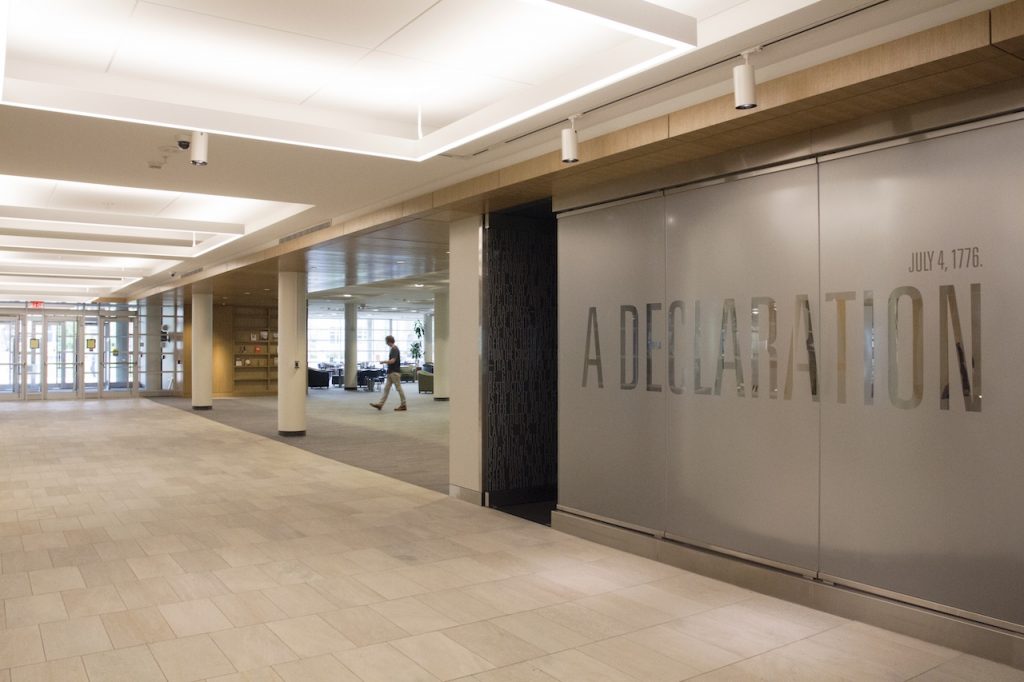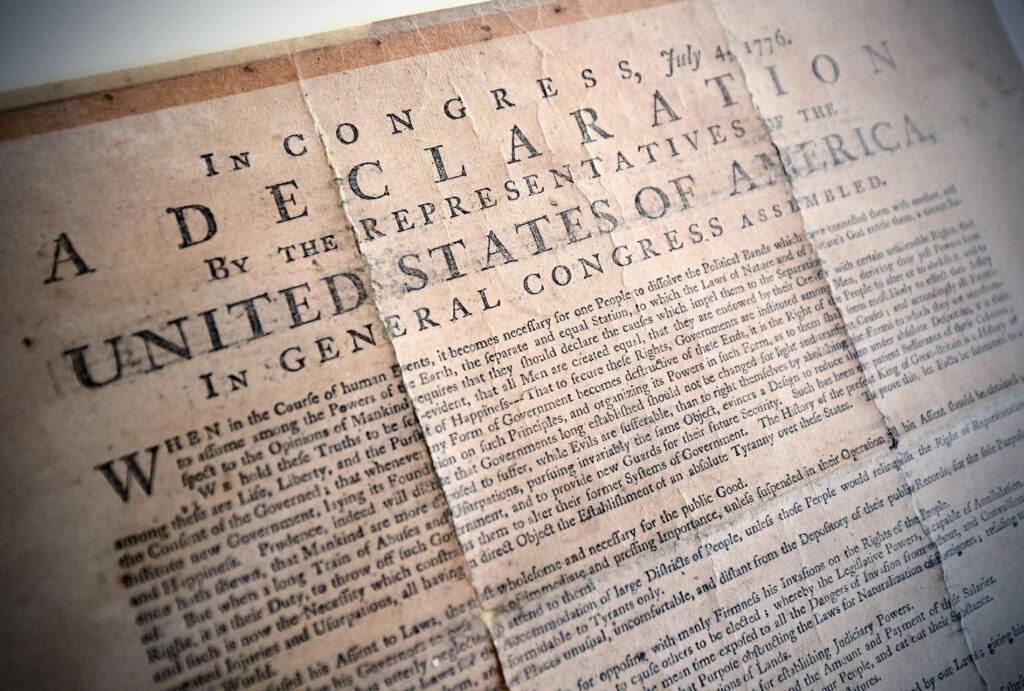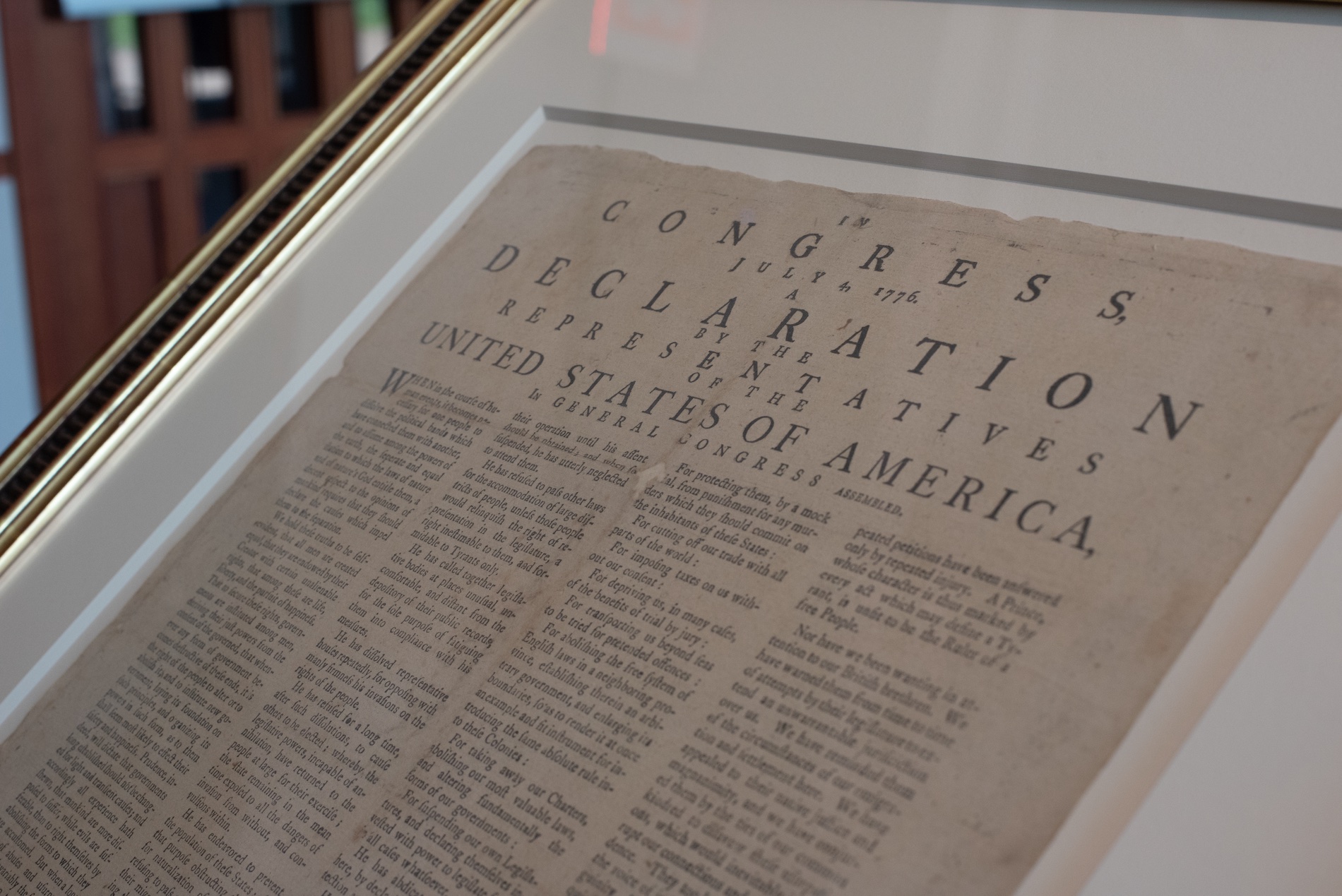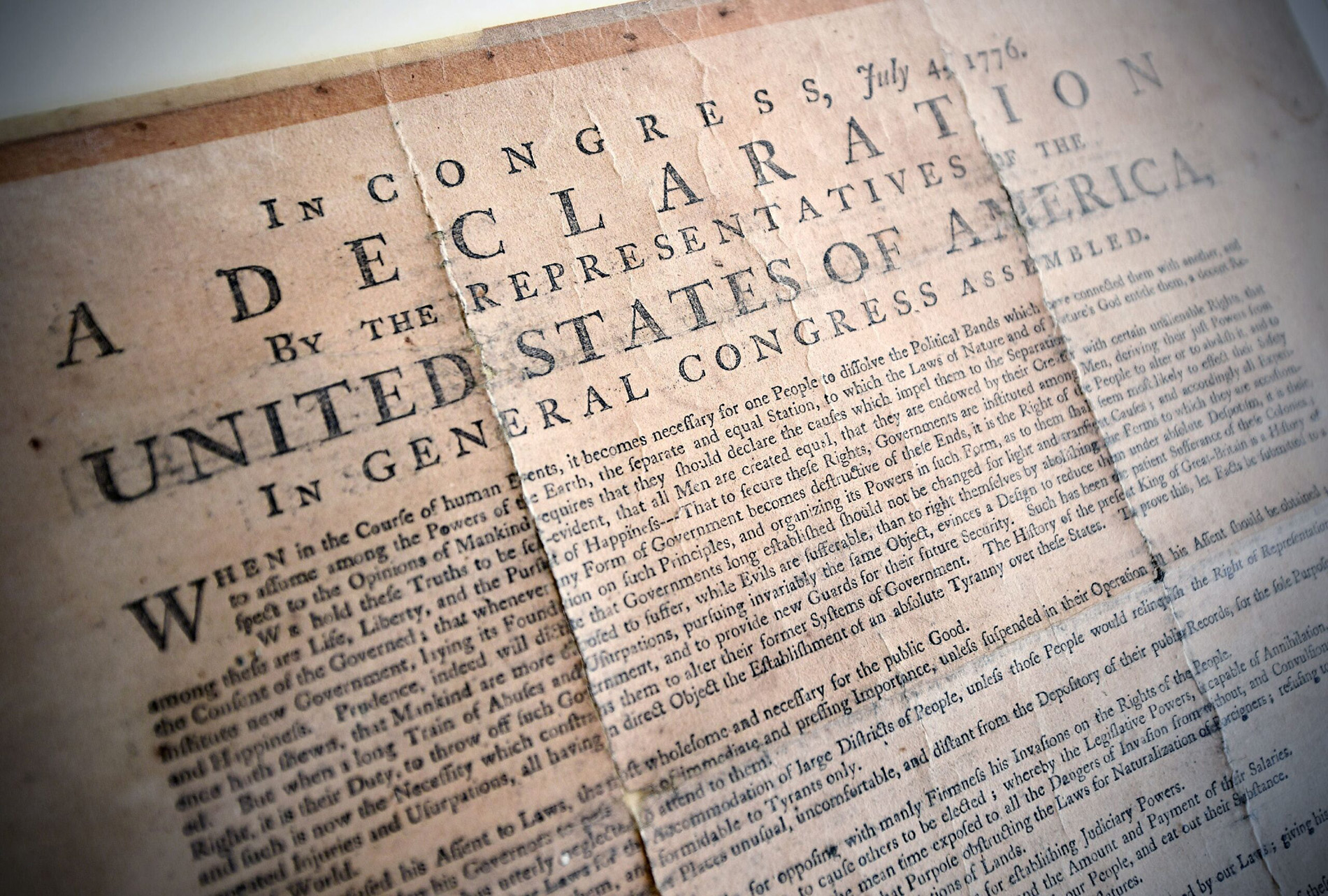
Declaration of Independence
Southwick Broadside
FAQs | Visiting the Declaration of Independence | Exhibition Open Hours

More than a year after the outbreak of the Revolutionary War, the Second Continental Congress met in Philadelphia to break all ties with Britain and to declare this decision to the new nation and the world. On July 4, 1776, two days after the approval of a resolution dissolving all allegiance to Britain, Congress adopted the Declaration of Independence to formally announce the creation of a new sovereign nation, referring to it by a name never before used in a public document: “the United States of America.” Thomas Jefferson drafted the Declaration, which John Adams and Benjamin Franklin edited.
That evening, Congress directed John Dunlap to print copies, known as broadsides, to be sent to every state and the Continental Army. The handwritten copy of the Declaration on display at the National Archives was completed on August 2, 1776.
A copy of the “Dunlap Broadside” arrived in Rhode Island on July 6, 1776. Using that copy, Solomon Southwick printed 29 copies in Newport and distributed them throughout the state. This copy, known as the “Southwick Broadside,” was posted in Warwick and signed on the back by the town clerk.

When Henry Ward, secretary of the state assembly, signed the broadside, he became the first person to sign any copy of the Declaration, preceding even John Hancock, whose name was printed on the broadside to attest its authenticity.
Only 7 copies of the Southwick broadside exist, whereas 26 copies of the Dunlap broadside survive today. Before the Newman Family gave the Declaration broadside to Washington University in 2015, this document was among the last known copies in private hands.
Explore Additional Exhibitions
Declaration Research Guide
Explore the Declaration of Independence Digital Exhibition
Frequently Asked Questions
Check out the Libraries’ Declaration of Independence Broadside in the News. To read more about the Declaration of Independence or visiting the exhibition, check out the FAQ sections below.
Declaration of Independence FAQ
Frequently Asked Questions about the Declaration of Independence:
The Declaration that most people think of is the handwritten copy on display in the National Archives in Washington, D.C. That copy was written on parchment (unlike this copy, which was printed on laid paper) and signed after the printed copies were distributed. Printing allowed news to come out faster with multiple copies.
Although it bears the date July 4, 1776, the Declaration was signed over the course of several weeks, with the earliest signatures made on August 2, 1776, by members of the Continental Congress who were present that day. A total of 56 delegates eventually signed the document.
Our copy is one of the original Declarations of Independence, which was printed before the official handwritten copy on display in the National Archives was signed. It is also the first copy of any of the Declarations to have a signature.
A broadside is a single sheet of paper that has printing on only one side, usually created for public display. A broadside provides information, commentary, proclamations, or other announcements. Though they may also have been circulated by hand, broadsides were often posted in town squares or other high-traffic areas.
The chamber built for the Declaration of Independence’s display was constructed specifically to keep the Declaration in the best condition possible. The lights are very dim, and the case has its own temperature and humidity control. Curators can monitor the lighting, temperature, and humidity to ensure the document’s safety.
The whereabouts of this broadside are unknown until 1941 when a private collector offered it for sale for $750. The Newman Family eventually acquired the broadside. It was displayed on a wall in their home two blocks from here for over 60 years until it was gifted to Washington University Libraries in 2015.
Visiting the Declaration of Independence FAQ
For additional questions regarding a visit to the Declaration of Independence exhibition outside our Visiting FAQs, please contact Special Collections by telephone at (314) 935-5495 or via email (spec@wumail.wustl.edu).
See the Library Hours page for open Declaration of Independence visiting hours; please note that the Declaration Chamber is not currently open on weekends.
Please check the Olin Library Guidelines and Policies page for current visitor policies. There is no cost for entry.
Information about visiting the library can be found here: Maps & Directions
Photography is permitted without the use of flash.
Visitors to the John M. Olin Library can experience museum-quality spaces and view a variety of exhibitions, many featuring holdings from Washington University Libraries Special Collections. Exhibitions are free and open to all. You can learn about our current and permanent exhibitions on view here: University Libraries Exhibitions
Large groups are welcome, but the Declaration Chamber can only accommodate up to 10 visitors inside at once.
The Julian Edison Department of Special Collections offers field trips for all ages and academic disciplines depending on staff and exhibition schedules. Please complete a Special Collections Instruction Request Form to request a field trip.

